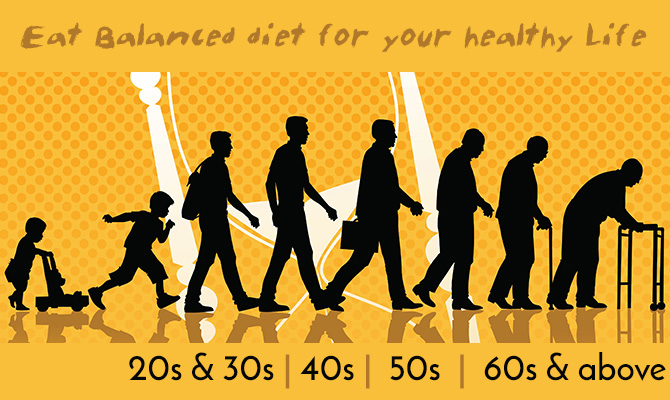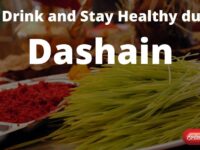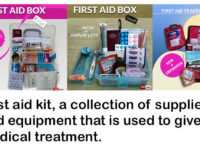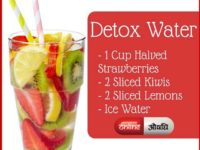Growing up isn’t easy. Whether you’re just entering ‘the real world’ after college, doing the kids-and-career-dance, or preparing for retirement, all stages of life have their surprises and requirements. As we age, our bodies change. Our focus changes. Our motivation changes. Our nutritional needs change. Our activity habits and abilities change.
Good health and a killer body might come naturally in your 20s… but what about your 30s, 40s, 50s, 60s, and yes, even 70s? Here’s how to eat right for your age and feel great at every stage of life.
For your busy 20s & 30s,
Start making time
Life is busy for most women aged 20-30 and healthy eating is often way down the list of priorities. A high percentage of women in this age band fail to meet the recommended daily intake for several key nutrients, including calcium, folic acid and iron.
Skipping breakfast and relying on quick, convenience foods high in salt and sugar may result in low fibre intake. The recommended daily amount of fibre is 30g per day, yet the average intake for adults is only 12g. Low fibre, high sugar and high salt diets can contribute to digestive problems such as constipation and an increased risk of diverticular disease and high blood pressure later in life.
Women who are considering starting a family should ensure they are consuming enough calories, folic acid and minerals such as iron and calcium.
What should I eat at this age ?
Calcium-rich foods:
To ensure you’re getting the required amount of calcium, you need to eat three servings from the dairy group each day (1 serving = 200ml milk, one small pot yogurt, 30g cheese). If you’re pregnant there are some dairy foods you should avoid including unpasteurised milks, soft cheeses and soft blue cheese – this includes products made from unpasteurised goat and sheep’s milk. If you don’t eat dairy, try calcium rich plant products such as broccoli, spinach, beans and fortified soy products such as tofu.
Wholegrains
Make time for breakfast. Try fortified wholegrain cereals or porridge oats with chopped fruit or a handful of nuts and seeds like flaxseeds. A proper breakfast will provide fibre and several key vitamins.
Low salt
Official guidelines suggest that adults should consume no more than 6g salt per day (less for children). Check information on the back of the pack before you buy ready meals or sandwiches – for a main meal you should aim to eat no more than 2.5g salt. Use alternative seasonings when cooking – garlic, black pepper, chilli, lemon juice, fresh herbs and spices. Taste before you season with salt.
Folate-rich foods
Folate (also known as folic acid or vitamin B9) is of critical importance both before and after conception in protecting your baby against neural tube defects and cleft palate. Good sources of folate include fortified breakfast cereals (which also include iron), dark green leafy vegetables and oranges.
In your 40s,
Exercise and iron are very important
At this time of life many people take their good health for granted and healthy eating and exercise are often put on the back burner. But as we grow older, good nutrition and regular exercise become even more important. A diet rich in antioxidants will help protect against problems like heart disease, Alzheimer’s, cataracts and certain types of cancer.
After the age of 40, the metabolic rate (the speed at which the body burns calories) drops, but the drop is very modest and the real reason many people in this age bracket start to suffer from middle-aged spread is due to a change in hormone levels and poor dietary choices, combined with a lack of exercise. Excess weight, particularly around the ‘middle’ is a risk factor for heart disease, diabetes and osteoarthritis and the longer you wait before you tackle the problem the harder it becomes – nip any weight gain in the bud now before it becomes a serious problem.
What should I eat at this age ?
Antioxidant-rich food
Brightly coloured fruit and vegetables are the best source of antioxidants. Make sure you eat at least five portions a day and include a wide variety of different produce.
Iron-rich food
Liver and lean red meat are the best and most easily absorbed forms of iron (haem iron), so try to eat red meat approximately twice a week (you don’t need to eat huge portions, 100g is enough). Vegetarians can eat fortified breakfast cereal, lentils and plenty of green leafy vegetables such as spinach, green beans, asparagus and broccoli. Enjoy these plant foods with foods rich in vitamin C to aid absorption, such as spinach.
In your 50s,
Watch your fat levels
Health problems, such as raised cholesterol, high blood pressure and type 2 diabetes are more common in this age group. A low-fat, low-GI diet which includes plenty of fruit and vegetables, is the best way to prevent and treat these problems.
As women enter the menopause, they are affected in different ways. Consequences such as a decline in libido, osteoporosis and heart disease are all linked to the decline in oestrogen levels that accompany this stage of your life. These hormone changes accelerate the loss of calcium from bone, which increases the risk of osteoporosis or brittle bones. To counteract this, it’s important to eat at least three servings of low-fat, calcium-rich foods each day.
Smoking and being inactive can severely harm your bones, and it’s particularly important on the exercise side to include some weight bearing exercise such as brisk walking, yoga, jogging or aerobics. Aim for a combination of weight-bearing exercise and aerobic activity to help keep bones and joints strong. Toning and muscle development can increase metabolic rate, as increased muscle mass helps to keep our weight constant.
Continue to drink 6-8 glasses of water or herbal teas every day and watch caffeine consumption. Caffeine can interfere with the amount of calcium we absorb.
If you don’t eat at least one serving of oil-rich fish each week, you should also think about taking an omega-3 supplement.
What should I eat at this age ?
Follow a Mediterranean diet
A Mediterranean diet is based around lots of fresh fruits and vegetables, of all colours and types to help you obtain a spectrum of heart friendly vitamins and minerals. Other healthful foods are whole-grains, lean meats and fish as well as heart-friendly fats such as olive oil. Get your cholesterol and blood pressure checked and if you have high cholesterol, you may consider trying products rich in plant stanols or sterols which can help lower cholesterol levels.
Slash the sat fat
As we age, our body’s energy requirement decreases. Body fat gets deposited when we take in too many calories and don’t burn enough in our everyday life. Include monounsaturated and polyunsaturated fats from nuts, seeds and their oils instead of too much saturated fat in animal products.
Phytoestrogens
Soya based foods such as tofu may help reduce some of the unpleasant symptoms associated with the menopause. Eating 15-25g of soya protein a day may help reduce blood cholesterol levels. Use tofu instead of beef in stir-fries and pour calcium-enriched soya milk on your cereal. If soya isn’t your thing, other sources of phytoestrogens include lentils, beansprouts, peanuts, and sweet potatoes.
Omega-3 fats
Aim to eat three portions of omega-3 rich foods a week as these can help to keep bones and heart healthy. Remember canned fish such as salmon, sardines and mackerel offer value for money and are omega-3 rich (but not canned tuna). Other sources include omega-3 enriched eggs, nuts and seeds like chia and flaxseed.
60 & over,
Vitamins are vital
As we grow older, various physiological and psychological changes occur which have a direct effect on nutritional requirements. The body becomes less efficient at absorbing and using many vitamins and minerals. Long-term use of prescription drugs can reduce the absorption of certain nutrients. At the same time, many people find that as they get older their appetite decreases. Since the need for vitamins and minerals stays the same, or in some cases increases, it becomes even more important that the food we eat is healthy and nutritious.
Digestive problems, like constipation, piles and diverticular disease, are more common as we age and become less active. Ensure you keep your fluid intake up by drinking lots of water. Being active helps the gut function appropriately, even walking or yoga can help reduce stress and anxiety levels which can contribute to constipation.
Our sense of smell and taste becomes less acute as we get older, but don’t fall into the trap of adding extra salt to your food – use herbs, spices and other flavourings such as garlic, lemon juice, flavoured vinegars or mustard.
As levels of stomach acid fall with age, the absorption of iron, calcium and the vitamins B6, B12 and folate are reduced. Decreased secretion of gastric intrinsic factor, the protein required for vitamin B12 absorption further decreases your levels of vitamin B12. As a result symptoms of fatigue, weakness and impaired concentration may ensue.
The risk of heart attack and stroke also rises steadily with age. The major contributing factors – nutritional deficiencies, too much saturated fat, alcohol, smoking and a lack of exercise are factors which can all be addressed.
As we get older, our body tends to become less efficient at absorbing or manufacturing vitamin D. The body can make vitamin D by the action of sunlight on the skin, but as people get older they tend to spend less time outside, so make sure your diet contains vitamin D rich foods like eggs and oily fish. Over 65s are also advised to take a supplement of 10 micrograms of vitamin D daily.
What should I eat at this age ?
Fibre
Make sure that your diet includes lots of fibre-rich foods such as wholegrains, oats, fruits, vegetables, beans and lentils.
Vitamin B12
Ensure that you include plenty of foods rich in B12 such as meat, fish, eggs, dairy products and fortified breakfast cereals all contain vitamin B12. Check with your GP if you are concerned about your vitamin B12 levels.
Vitamin D
Small amounts of vitamin D are found in eggs and oil-rich fish as well as fortified foods such as spreads. Vitamin D can also be made by the action of sunlight on the skin so when the weather is warm, expose your arms and face to the sun for at least 20 minutes a day.
Source :
bbcgoodfood.com
www.precisionnutrition.com














